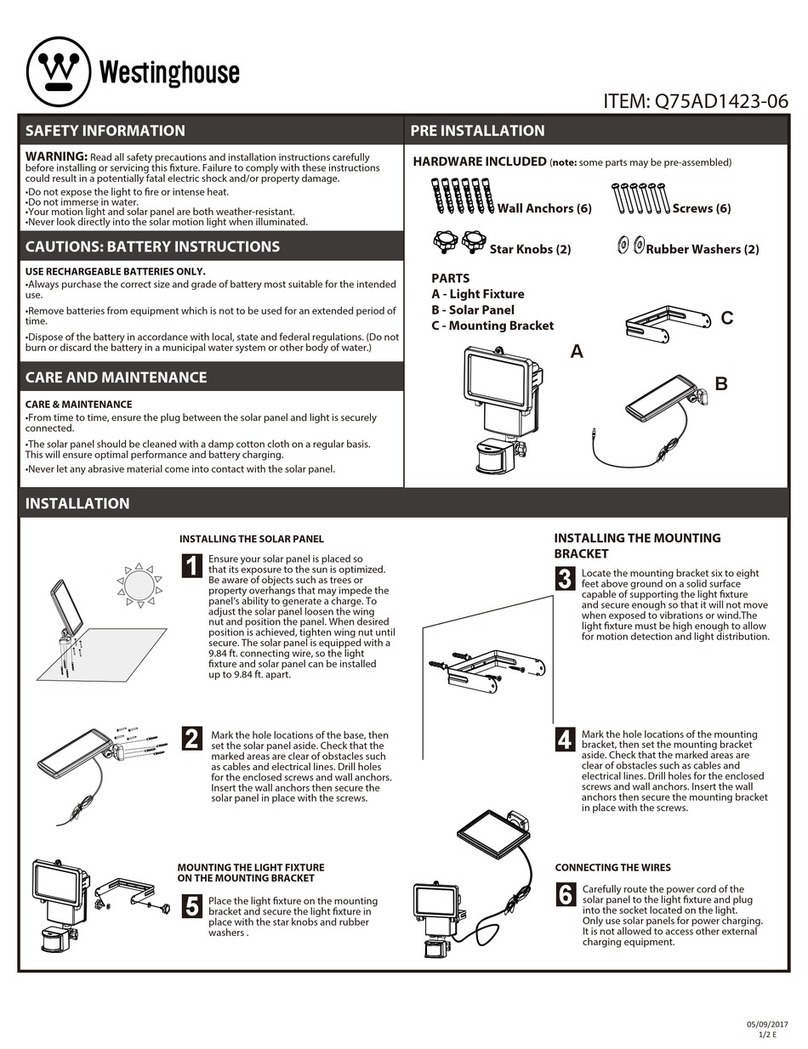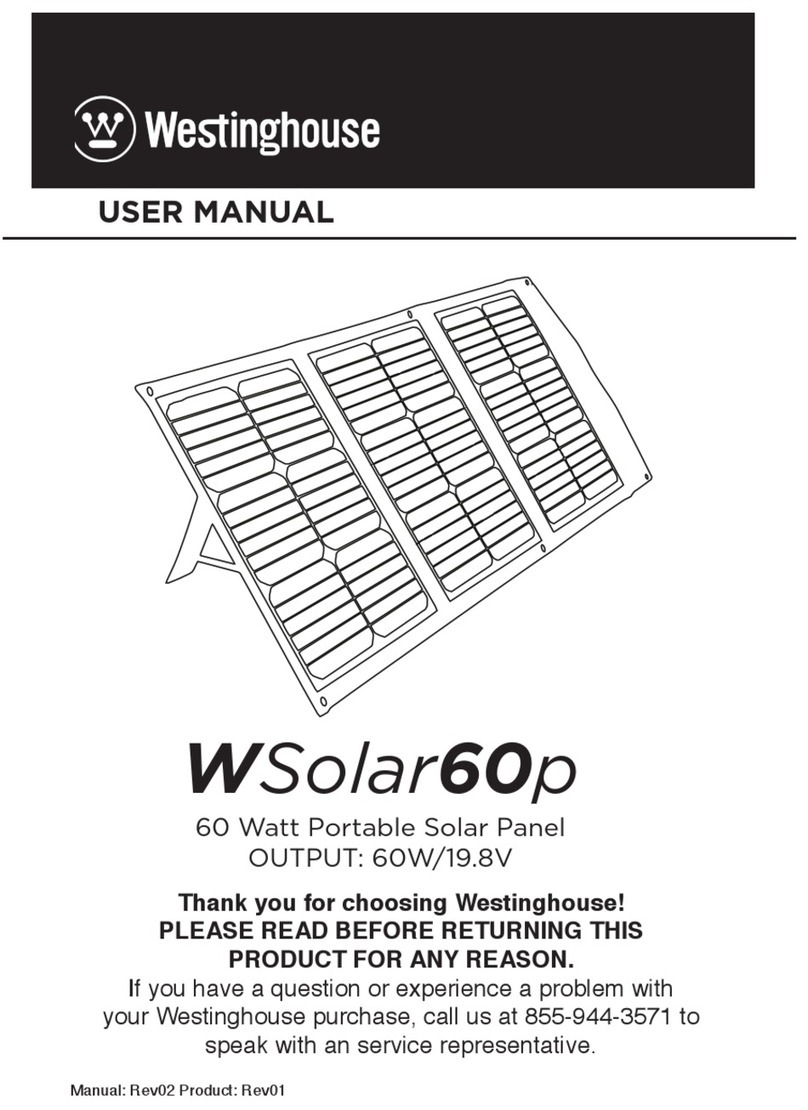
Westinghouse Solar AC Installation Guide
Copyright © 2011 - Westinghouse Solar
Copyright © 2011. Westinghouse Solar. All rights reserved.
No part of this publication may be reproduced, stored in a retrieval system or transmitted in any form or by any
means, electronic, mechanical, photocopying, recording, scanning or otherwise, except as permitted under Section
107 or 108 of the 1976 U.S. Copyright Act, without prior written permission from an officer of Westinghouse Solar.
For permission contact: Westinghouse Solar, 1475 South Bascom Ave. Suite 101, Campbell, CA 95008, Attn: VP of
Marketing.
Trademarks: Westinghouse Solar, Westinghouse Solar Power Systems, Sun for Everyone, and related trade dress
are trade names, trademarks or registered trademarks, and may not be used without written permission.
LIMITATION OF LIABILITY/DISCLAIMER OF WARRANTY. WESTINGHOUSE SOLAR, ITS PARENT, SUBSIDIARIES,
AND THEIR EMPLOYEES, AGENTS, OFFICERS AND DIRECTORS (COLLECTIVELY “AUTHOR”) MAKE NO
REPRESENTATIONS OR WARRANTIES WITH RESPECT TO THE ACCURACY OR COMPLETENESS OF THE CONTENTS
OF THIS WORK AND SPECIFICALLY DISCLAIM ALL WARRANTIES, INCLUDING WITHOUT LIMITATION WARRANTIES
OF FITNESS FOR A PARTICULAR PURPOSE. NO WARRANTY MAY BE CREATED OR EXTENDED BY SALES,
PROMOTIONAL MATERIALS OR CUSTOMER SERVICE. THE ADVICE AND STRATEGIES CONTAINED HEREIN MAY
NOT BE SUITABLE FOR EVERY SITUATION. THE CONTENTS OF THIS WORK ARE INTENDED FOR A TARGET
AUDIENCE THAT HAS SOME BASIC CONSTRUCTION AND ELECTRICAL WIRING KNOWLEDGE. THIS WORK IS SOLD
WITH THE UNDERSTANDING THAT THE AUTHOR IS NOT ENGAGED IN RENDERING LEGAL, ACCOUNTING, OR
OTHER PROFESSIONAL SERVICES. IF PROFESSIONAL ASSISTANCE IS REQUIRED, THE SERVICES OF A COMPETENT
PROFESSIONAL PERSON SHOULD BE SOUGHT. IN VIEW OF THE CHANGES IN LOCAL, STATE AND FEDERAL
REGULATIONS, THE READER IS URGED TO REVIEW AND EVALUATE THE INFORMATION PROVIDED BY THEIR
LOCAL, STATE AND FEDERAL REGULATORY AUTHORITY FOR, AMONG OTHER THINGS, ANY RULES, REGULATIONS,
INSTRUCTIONS, REQUIREMENTS, OR PRECAUTIONS RELATED TO THE INSTALLATION OF PV SOLAR ELECTRIC
SYSTEMS. READERS SHOULD CONSULT A LICENSED SOLAR INSTALLATION CONTRACTOR OR ELECTRICIAN WHERE
APPROPRIATE. THE AUTHOR SHALL NOT BE LIABLE FOR DAMAGES ARISING HEREFROM.
Place of Origin. This manual, and the techniques, methods and IP contained within it, were created in the United
States of America. Westinghouse Solar AC Systems contain some foreign made components. Assembly, design and
distribution takes place through operations located within and outside the United States of America.
Protected by U.S. patents (7,406,800; 7,832,157, 7,866,098 and 7,987,641), and foreign patents (2,005,248,343;
243,626; 274,182 and 751,614). Other patents pending.





























